In. Out. Is it time to shake it all about?
06 Jan 2020
In-housing has never been a hotter topic.
Despite the sense of recency as a trend, with debate in the trade press, at conferences, and in many conversations involving agencies, in-housing has been around for years in one form or another. Brands have routinely explored different in-house options as part of their ongoing challenge to define the right model for their budget, scope of work, culture and future needs.
But it is still not a ‘one way only’ trend.
The research company, Gartner, reported in 2018 that most marketers ‘expected to retain or expand their use of (external) agencies between now and 2020’. Research carried out by AAR in 2016 suggested that there were as many brands doing less in house as there were brands doing more, suggesting that the rate that brands move to in-housing tends to be cyclical.
That said, brand marketers are having to work harder to deliver consistently across all of their customer touchpoints. The growing focus on models, increased complexity in business operations, issues with transparency and trust, rise of CX and ownership of data, agility and necessity of speed to market, pressure on costs and ROI, pressure on agency business models and relentless disruptive change has led to the cycle accelerating over the last three years.
The models we observe commonly split into three types:
- 30% in house, 70% via external partners – by far the most common split
- 50% in house, 50% via external partners
- 70% in house, 30% via external partners – the least common
Many brands need an immense volume of content produced to service their customer touchpoints and the speed to market has to be rapid. To cope with this tsunami of need, more clients are bringing parts of their marketing output in-house.
As a consequence, the agency community are expressing anxiety over what they see as a trend in agencies losing business and important margin and tasks to in-house teams that would previously have been handled by an external agency partner.
At an AAR breakfast for agency CEO’s on evolving client:agency models in November last year, during the Q&A in-housing was raised as a topic that agencies would most like AAR to look into. So we did.
AAR insight research
In order to get some granular insight on brands’ viewpoints on in-housing and how it actually works in practice, we undertook a series of in-depth interviews with 10 different national and international brands in Autumn 2019.
All those we interviewed have, or have had, in-house creative resource in their UK office. The in-house departments’ size varied from less than five people in total to more than 200. We spoke to both leaders of in-house agencies and marketers who work alongside them.
Those with in-house media services were not explored during this project: that’s an investigation planned for 2020.
The brands were from a spectrum of categories: retail (bricks and mortar and online), FMCG, entertainment, financial services, and charity sectors. These were brands that represented, conservatively, in excess £12bn of UK marketing spend.
In some cases, the brands’ in-house resource had been established for more than three decades; for others, only a couple of years.
The list also included two brands who had managed up to 30% of their marketing output via their in-house agency – for ten years and three years respectively – but had subsequently both elected to close these resources down and outsource everything to their external agencies.
There were some common themes that covered both the successes and the rarely acknowledged complexities of in-housing, and some useful tips for those external agencies who are – or will soon be – working with brands that have dedicated in-house resource.
The key themes that emerged are grouped under the following headlines:
- There is always going to be a role for external agency partners
- Creating and running in-house resource is not a walk in the park
- The third year of operation of in-house creative resource is like the difficult ‘second album’
- Cross-charging internally for in-house services is a double-edged sword and doesn’t necessarily lead to the cost neutrality Nirvana hoped for
- When it goes wrong, it goes wrong toxically
- There are clear ‘X factors’ that define success
- The growth in popularity of in-sourcing
- The 10 best pieces of advice that we can give to the external agency community
The following is a summary of some of the things we learned during these conversations that are particularly relevant for creative agencies. The other themes will be published via other AAR think pieces or events in the coming months.
There is always going to be a role for external agency partners
The most reassuring prediction that we can make for anxious agencies in the creative space is that hell will most likely freeze over before all brands decide they no longer need the strategic and creative IP, perspective and platforms that their relationships with external agencies deliver.
As one leader of a large in-house agency put it:
“We value our external partners highly. There’s not a world where we would want to do everything through our internal agency: there’s always a role for external agencies.”
When commenting on the scope of remit between in-house and external agency partners, there was commonality in the view that an in-house agency is all about delivery whereas the external agencies’ focus should be the quality of the creative thinking and ideation. This is rather binary and it’s not to say that the leaders of in-house teams weren’t concerned about creativity. They are. Very concerned. Whilst the axis for in-house agencies is through-put, with the focus being on ‘resourcing at the point of demand’, managing the volume of asks in the most agile way possible, there is still a desire to make the work as good as it can possibly be.
“With in-house teams you have to recognise that most of the creative work you do is akin to ‘porridge every day’. You get to decide whether it has sugar, jam, cream or chocolate sprinkles on it but it’s still porridge.” In-house agency leader
The brands we spoke to acknowledged that the balance to this was how effective the work is commercially for the brand. The task is to always do the very best for the brand to get the desired commercial return but that in-house teams still had to aim to ‘knock the porridge out of the park’ creatively.
That said, big projects where fresh thinking, creativity and innovation are required are seen as the province of the external perspective by almost everyone we spoke to.
“There’s always a call for balance; you need to have an external agency roster. You need them for the right briefs and for innovation. Because we do a lot internally, we need to make sure the in-house team keep on top of their personal development and that we give them opportunities to work with external agencies in order to keep fresh. There is an inherent danger in losing that external perspective.” Marketer responsible for in-house creative resource
Even where there is a highly sophisticated in-house agency within a client company – one multi-product brand we spoke to had a team numbering up to 26 people focused on creating and producing a wide range of digital content and campaign assets (key visuals, POS and other instore assets, A/V, social media and, in one case, a TV ad for a media owner partnership) – there was still the view that there was a continued and defined need for relationships with external agencies.
“I think the future for this model for brands is – where feasible and possible – to have an in-house team that has a clearly defined role. But I’m not seeing a place where that trumps the need for outside support.” In-house agency leader
The 10 best pieces of advice we can give to the agency community
- Work with the marketing team to forensically agree the remits and responsibilities for both the in-house team and you as the brand’s external agency partner. This should indicate the clear water between you and dictate where the hand offs are when collaborating on a campaign or piece of work. Review this with your client regularly.
- Make sure the respective remit and scope of work of both the in-house team and you as the external agency partner are communicated clearly to the rest of the client’s business.
- Always keep in mind that brands have a very clear view about the value of their external agency partners and what they can offer a brand in terms of IP and perspective.
- In-house agencies usually have an openness and willingness to collaborate that will serve the mutual relationship well.
- They are generally pretty agnostic and rarely have an agenda to take on the external agencies’ work – they don’t set out to run the world, they don’t need to win big pitches and be on top of the new business rankings. They are much more focused on making great, hard-working assets for the brand that are right and drive the business – and you can help them with that.
- Be confident. Don’t be precious. Acknowledge the in-house agency’s strengths and dovetail them with your own. Recognise that the value you bring is your creative IP, strategy, perspective and big galvanising ideas.
- If you become obstructive, unwilling to co-operate or dismissive of their work, this leads to strife that the CMO and their team don’t need. In this scenario, it’s very likely the external agency will be the loser. Resentment can build up internally: ‘why have I just spent thousands of pounds on that when it’s been so painful?’ can lead to the marketing team questioning all of the work, not just the piece that should have been handed off to the in-house agency. Fighting over work that you can’t hope to do at the same cost or with the same agility as the in-house agency is not smart. Concentrate on what you do that adds value and lean into your strengths.
- Include the in-house team when entering effectiveness or integrated awards; enter awards jointly as a clear statement of your collaboration with one another and intention to do the best, most effective work for the brand.
- Promote shared portfolios of work internally within the brand and in the agency’s own credentials.
- Be less afraid. Most agencies already work with many brands who don’t have an in-house capability, and it’s not something they can build overnight. The fear that ‘everything is going in-house, we are going to lose our business’ is misguided. It’s just not going to happen in that way.
“We work very collaboratively with our agency; we don’t touch what they do, that’s their world. But we work very collaboratively with them because we look after the day to day work for the brand. You’ve got to trust each other.” In-house agency leader
“Some of the best agencies I’ve worked with are the ones that don’t try and do the ‘we want it all’. It is pointless the agency trying to do the art-working and other assets as we can get that done elsewhere and the agency could then move on to the next big project or exciting thing.” Senior Brand Manager
Whilst this summary is only scratching the surface of the what we have learned during our conversations with those brands who run their own in-house creative resource, I hope it engenders a feeling of reassurance. It should also flag an opportunity which exists for agencies to help and support their clients who want to create some form of in-house resource – whether it be via headcount or insourcing – or who already manage some of their scope of work in-house.
As the model where brands depend on both their in-house resource and their external agency partnerships to seamlessly deliver brand communications evolves, one very significant and necessary question arises.
How are agencies going to be suitably remunerated for the strategic and creative platforms they create from which other integrated communications – developed by the in-house team – are produced?
The value of the strategic and creative ideas created by the external agency which are exploited, in the best sense of the word, by the brand for forms of communication that the agency does not execute nor gain any margin from, cannot be predicated on a time-based, cost plus model of remuneration. If the future for performance marketing and other hardworking integrated assets is in-house management then the model via which external agencies are remunerated for the IP they create for their clients has to change.
We’ve got some ideas.
Watch this space.
About The Author





